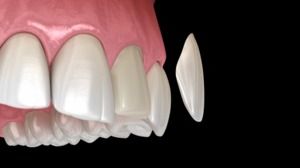Description
Dental crowns help a tooth that has been weakened by trauma or too many dental fillings. In this video, Dr. Krendl explains the candidacy requirements for a dental crown and how a crown functions. He also explains why it is sometimes a better option than a dental filling.
View transcript
So a dental crown is something that you place on a tooth when it's become weak for some reason, whether it be a person had a filling done and maybe another filling done on the same tooth. Well, by the time you do that a couple of times, the tooth becomes weak. So a crown just fits over the top, kind of like a cap might fit over your head and it protects that tooth. We use materials that are all white, all tooth colored, all porcelain. So a person will not know that it's even there after it's been there for a second.
A person is a candidate for a crown if they have a cracked tooth, if they have a filling that has broken, if they have a part of the tooth that's broken. Any of these types of situations would be a person that's a candidate for a crown.
So some people ask us, you know, "What do I do now that I've got a crown? What's different? Can I still brush that area? Can I still floss?" The answer is yes. You still floss normally. You brush normally. And taking care of a crown really should last you a long, long time. The average crown lasts well over 10 years.
So a person may ask, "Well, Doc, why can't you just fill this tooth? You know, I had it filled before and it lasted me a while." And the answer is sometimes you can. The answer is sometimes you can. But we have to help the patient make the best decision and a lot of times, if a tooth has had work done on it multiple times, it needs a crown for that patient to have a really good long-term prognosis. If we were just refill a tooth too many times, the tooth becomes weak. And unfortunately, that can put that tooth at risk for fracturing and may need to be removed.


















